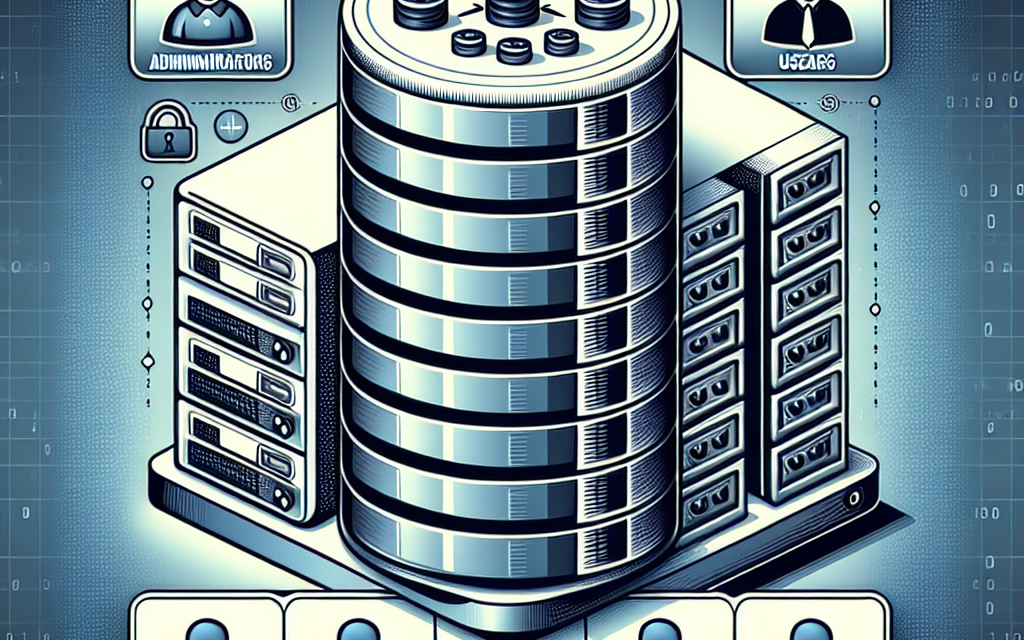Managing database user roles effectively is crucial for maintaining security and performance on Linux servers. When working with databases, particularly in environments that demand high levels of security and data integrity, adopting a structured approach to user roles is essential. This article outlines best practices for managing database user roles on Linux servers that can help you ensure a controlled, efficient, and secure database environment.
1. Understand the Principle of Least Privilege
The principle of least privilege (PoLP) is a foundational concept in security management. It states that users should have only the permissions necessary for their roles. When setting up database user roles, limit access to the minimum rights required for users to perform their functions.
Implementation Tips:
- Review Roles Regularly: Audit user roles and permissions periodically to ensure compliance with PoLP.
- Temporary Privileges: For specific tasks, consider granting temporary higher privileges that can be revoked after the task is completed.
2. Use Role-Based Access Control (RBAC)
Role-Based Access Control (RBAC) simplifies user management by grouping permissions into roles rather than assigning permissions to individual users.
Implementation Tips:
- Define Clear Roles: Establish clear and distinct roles such as DBA, Developer, Analyst, etc., each with specific permissions tailored to their responsibilities.
- Role Hierarchy: Create hierarchical roles to make management easier and allow privileges to be inherited by subroles.
3. Employ Strong Authentication Methods
Securing user access is critical in managing database roles. Utilize strong authentication methods to verify a user’s identity before granting access.
Implementation Tips:
- Multi-Factor Authentication (MFA): Implement MFA for an added layer of security.
- Secure Connection: Use SSH tunnels or VPNs to enforce encrypted connections when accessing databases remotely.
4. Leverage Database Auditing
Audit trails provide visibility into user actions within the database, which is vital for tracking changes and identifying potential security breaches.
Implementation Tips:
- Enable Auditing: Make use of built-in auditing features in your database management system (DBMS) to log user actions.
- Regular Review: Regularly analyze audit logs for suspicious behavior or unauthorized access attempts.
5. Use Environment-Specific User Roles
In multi-environment setups (development, testing, production), maintain distinct user roles for each environment to reduce the risk of accidental changes or breaches.
Implementation Tips:
- Environment-Specific Roles: Create specific roles for development and production environments with capabilities tailored to each phase.
- Isolation of Data: Ensure that roles in the development and testing environments do not have access to sensitive production data.
6. Implement Role Management Tools
Manual role management can lead to inconsistencies and oversights. Utilize role management tools or scripts to streamline the process.
Implementation Tips:
- Automated User Management: Use database management tools that support automated user role management and permissions auditing.
- Configuration Management: Utilize configuration management tools like Ansible, Puppet, or Chef to enforce role configurations across servers.
7. Document User Role Management Policies
Clarity in user role management policies is essential for maintaining consistent practices among team members.
Implementation Tips:
- Create Documentation: Draft clear policies outlining how user roles should be created, reviewed, and managed.
- Training: Ensure that team members are trained on policies and understand the importance of role management.
8. Monitor User Activity
Constantly monitor user activity to detect potential misuse or abnormal behavior that could indicate a security threat.
Implementation Tips:
- Alert Systems: Set up alerting mechanisms for specific actions, such as failed login attempts or privilege escalations.
- Real-Time Monitoring: Utilize monitoring tools that can provide real-time analytics on user activity.
9. Regularly Update Roles and Permissions
As projects evolve and business needs change, so should user roles and permissions to reflect current requirements.
Implementation Tips:
- Periodic Reviews: Schedule regular audits of user roles and permissions to align with changing organizational needs.
- Acknowledge Departures: Immediately revoke permissions upon user termination or role changes to minimize risks.
Conclusion
Effective management of database user roles is essential for protecting sensitive information and ensuring the integrity of your database systems on Linux servers. By adhering to these best practices—such as implementing the principle of least privilege, using role-based access control, and regular auditing—you can create a secure and efficient environment that meets the demands of your organization. Make sure to periodically review and update your policies to adapt to new threats and technological advancements, ensuring robust database security for years to come.
Happy Database Management!





